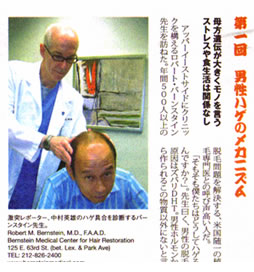September 15th, 2006
Q: I am a 48 year old woman. Since I have used a new hair dye, I seem to be going bald. Is this possible?
A: Dying hair is a very common practice and hair loss in women who are 48 years old is also very common. The fact that the two have occurred together does not necessarily imply that there is a cause and effect relationship.
Women who are already losing hair often go to a great deal of effort to disguise this fact with dying, bleaching, and perming. These procedures, particularly if too aggressive, or done too frequently, can cause weakening and increased fragility of the hair shaft and increased hair breakage may result. This is more common if the hair is already fine in texture. This breakage is frequently interpreted as “hair loss” and it certainly does result in a significant loss of hair bulk, although the follicle itself is not damaged.
When there is a relationship between hair dye and hair loss in women, it is usually an inflammatory/allergic or irritant reaction. If severe, there may be an actual burn. In these cases, there would be a history of redness and swelling. An inflammatory reaction could cause hair loss but it would be unusual to damage follicles enough to produce scarring – although this occasionally does occur. A scalp biopsy is often helpful to sort out these cases.
 NY Japion — a weekly newspaper in the Japanese language, published in the New York tri-state area, and distributed for free in the Japanese community — has featured Robert M. Bernstein, MD, in their series on hair loss in men and women.
NY Japion — a weekly newspaper in the Japanese language, published in the New York tri-state area, and distributed for free in the Japanese community — has featured Robert M. Bernstein, MD, in their series on hair loss in men and women. 





